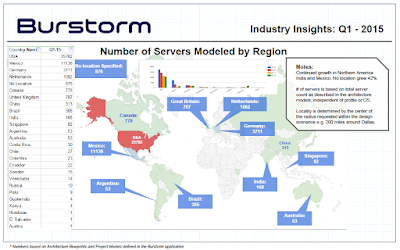Twitter Feed
Why the Cloud? Processing, Exploitation and Dissemination
So why is the intelligence community so interested in cloud computing? Three letters: PED (Processing, Exploitation, Dissemination). Take these two real life examples from the publishing industry. Jim Staten of…
World Summit of Cloud Computing: “Enterprise Cloud Computing” work group
To leverage attendees of the World Summit of Cloud Computing, a kick-off meeting of the “Enterprise Cloud Computing” work group will be held near Tel Aviv, Israel on December 3,…
Cloud Package Management
In his post “Missing in the Cloud: package management“, Dave Rosenberg highlights a critical issue in the adoption of cloud computing by government agencies. “I dare say that a standard…
PlugIntoTheCloud.com
Information Week has just launched PlugIntoTheCloud.com as their cloud computing destination. In his Non Linear Thinking blog, Bill Martin calls it a movement aimed at “providing a source and forum…
Is the cloud computing hype bad?
From Gartner “Why a little cloud hype might be useful“: “It’s too simplistic to say cloud hype is bad . If we are technically expert is might irritate us with…
Stop the FUD (Fear, Uncertainty and Doubt) !!
Dan Morrill! Count me in !! In his excellent article, “Cloud Computing is Scary – But the FUD Has to Stop“, Dan makes some excellent points: It is time to…
IBM, Microsoft and Google
On October 6th, IBM launched their cloud services initiative. This is a: “[C]ompany-wide initiative that extends its traditional software delivery model toward a mix of on-premise and cloud computing applications…
Government in the Cloud
Back in mid-September, there was quite a thread in the Google Cloud Computing Group on the use of cloud computing by the federal government. Some of the interesting comments were:…
CloudCamp Partners With SOA-R !!
I’m proud to announce that the final SOA-R Cloud Computing Education Event will be held in collaboration with CloudCamp. Now dubbed CloudCamp:Federal, the event will be held as an “unconference” to help…
Federal Cloud Computing Wiki
With the fast growing interest in cloud computing, the Federal Government community has established a Federal Cloud Computing Wiki. This wiki is managed by Dr. Brand Niemann, Senior Enterprise Architect…
as the linking of physical components and boxes together in way that addresses the organization’s needs. With this mindset, they focus on specific technical characteristics and capabilities. While these aspects still remain crucial to a successful deployment, the cloud solution architect must instead, visualize solutions as the linking together of compatible and interoperable services. With this viewpoint, the actual physical components are less of a concern and the service levels and service “-ilities” (maintainability, usability, portability, sustainability, etc.) rise in importance. They also must quantify the business economics of any delivered design. Many times economic aspects alone will define the difference between a new service launch and a new idea left on the shelf.
 |
|
Figure 1– Burnstorm cloud solution modeling software use
|
 |
|
Figure 2– Interactive solution design comparisons
|
( This content is being syndicated through multiple channels. The opinions expressed are solely those of the author and do not represent the views of GovCloud Network, GovCloud Network Partners or any other corporation or organization.)
( Thank you. If you enjoyed this article, get free updates by email or RSS – © Copyright Kevin L. Jackson 2015)
Cloud Computing
- CPUcoin Expands CPU/GPU Power Sharing with Cudo Ventures Enterprise Network Partnership
- CPUcoin Expands CPU/GPU Power Sharing with Cudo Ventures Enterprise Network Partnership
- Route1 Announces Q2 2019 Financial Results
- CPUcoin Expands CPU/GPU Power Sharing with Cudo Ventures Enterprise Network Partnership
- ChannelAdvisor to Present at the D.A. Davidson 18th Annual Technology Conference
Cybersecurity
- Route1 Announces Q2 2019 Financial Results
- FIRST US BANCSHARES, INC. DECLARES CASH DIVIDEND
- Business Continuity Management Planning Solution Market is Expected to Grow ~ US$ 1.6 Bn by the end of 2029 - PMR
- Atos delivers Quantum-Learning-as-a-Service to Xofia to enable artificial intelligence solutions
- New Ares IoT Botnet discovered on Android OS based Set-Top Boxes


